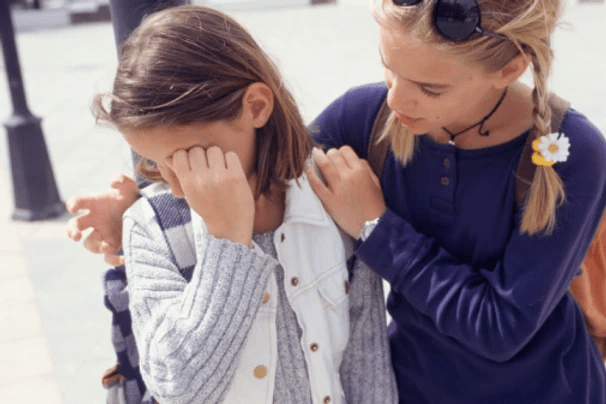Bullying is a big problem in our society, and what’s alarming is that one of the breeding grounds for this problem is our schools and universities. According to the Merriam-Webster dictionary, a bully “is habitually cruel, insulting, or threatening to others who are weaker, smaller, or in some way vulnerable.” But before we get into what bullying is, let’s first start by understanding it:
Fact 1. 75% of students say they have been affected by bullying. (3)
Fact 2. Bullying can cause serious harm. Children who are bullied are at risk for developing depression, anxiety, and headaches and stomach aches. (3)
Fact 3. Children who bully or have been bullied are at a higher risk of suicide. (3)
Fact 4. Half of students report that bullying is a PROBLEM at school. (3)
Fact 5. 78% of Canadians believe that not enough is being done to stop bullying in their community. (3)
So the question is, what makes a child a bully? And more importantly, how can we overcome bullying. Let’s first clarify that children don’t become bullies because they are bad children. They bully when they face challenges. There are different factors that may affect a child’s behaviour, including
What’s being modeled for them: for example, their family situation: children will often engage in similar behaviours as their parents and will often adopt the same attitudes that they have learned towards their peers.
Deficits in social skills: children who miss social cues may perceive other children as unfriendly, even when that is not the case. Those who have difficulties in putting themselves in other people’s shoes (perspective taking skills) may not be aware of how they are making others feel.
Attention seeking behaviour: some children may bully because they are seeking attention from their peers, parents, or others. Often, when we see attention seeking as the reason, it is an indication that they are not successful in getting attention in other ways.
Lack of confidence and self-esteem: insecurities can drive bullying. Children who bully may be trying to gain some power so that they don’t become victims. Children may also pick on others to fit in with their peers.
Finally, some children are more assertive and impulsive than others.
The facts tell us that bullying is a multifaceted problem such that many remedies need to be implemented if we want to make a difference in reducing this problem. Without intervention, children will continue to bully as they grow into adulthood (3), but there is hope: adults who care for children can make a big impact in curbing bullying. Adults and caregivers can explore with children why they bully and talk with them about it. They can also give children tools to build appropriate friendships which help to diminish bullying.


Here are some tips to curb bullying:
Be a role model. As mentioned, bullying is a learned behavior. Children pick up bullying from watching adults in their environment and by social media. So let’s be positive role models and teach our children how to be empathetic and have good social behavior from an early age.
Teach empathy skills. When children demonstrate empathy, they are less likely to enter into damaging or hurtful relationships. Empathy is a powerful skill that parents can teach children to help curb bullying. By developing empathy, children will understand that others have different feelings than their own. They will be more prepared to put themselves in others’ shoes and understand how others might feel. Most importantly, they will choose appropriate responses. So where shall we start with empathy? One quick tip is to start building an emotional vocabulary for the broad range of emotions children experience daily.
Role-play with your child. Have conversations with your child before bullying starts. When you prepare your child in advance, they will most likely approach you when they encounter a hurtful interaction at school or daycare. By being proactive, we will give them the opportunity to increase their vocabulary, and, just as importantly, an opportunity to role play what to do when they encounter bullying. When a child is insulted or hurt by peers, they are more likely to freeze in the moment. By providing children with scripts and actions that they can use, they will be more prepared to react in a way that will empower them while at the same time not exacerbating the situation.


MORE COMMON THAN YOU THINK
1 in 7 children suffers from mental illness in Manitoba [4].
70% of mental health problems have their onset in childhood or adolescence [5].
There Is Hope The good news is that mental illness can be treated effectively. There are things that can be done to prevent mental illness and its impact and help improve the lives of children experiencing mental health concerns. Early intervention is best.
How KIDTHINK Can Help
To make a referral contact us
To subscribe to our newsletter click here
Sources:
Merriam-Webster Dictionary. Retrieved from https://www.merriam-webster.com/dictionary/bully
My Child Is a Bully: What Should I Do (Blog post). Retrieved from https://childmind.org/article/what-to-do-if-your-child-is-bullying/
Promoting Relationships and Eliminating Violence Network. Retrieved from https://www.prevnet.ca/
Virgo Mental Health and Addictions Strategy Report, Manitoba 2018
Government of Canada. (2006). The human face of mental health and mental illness in Canada. Minister of Public Works and Government Services Canada




